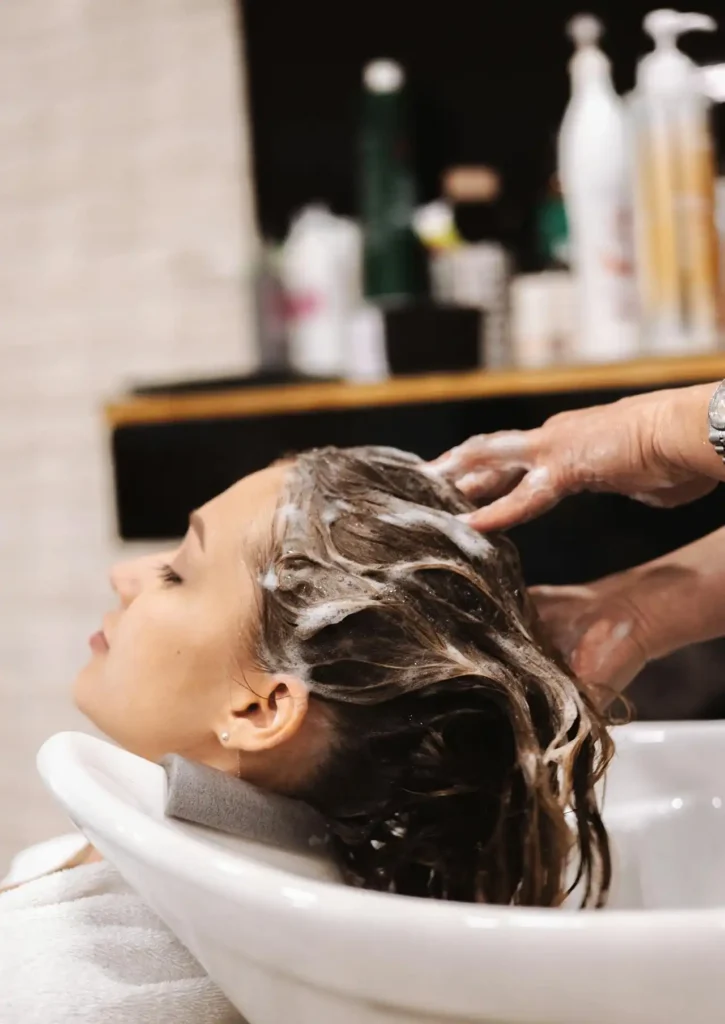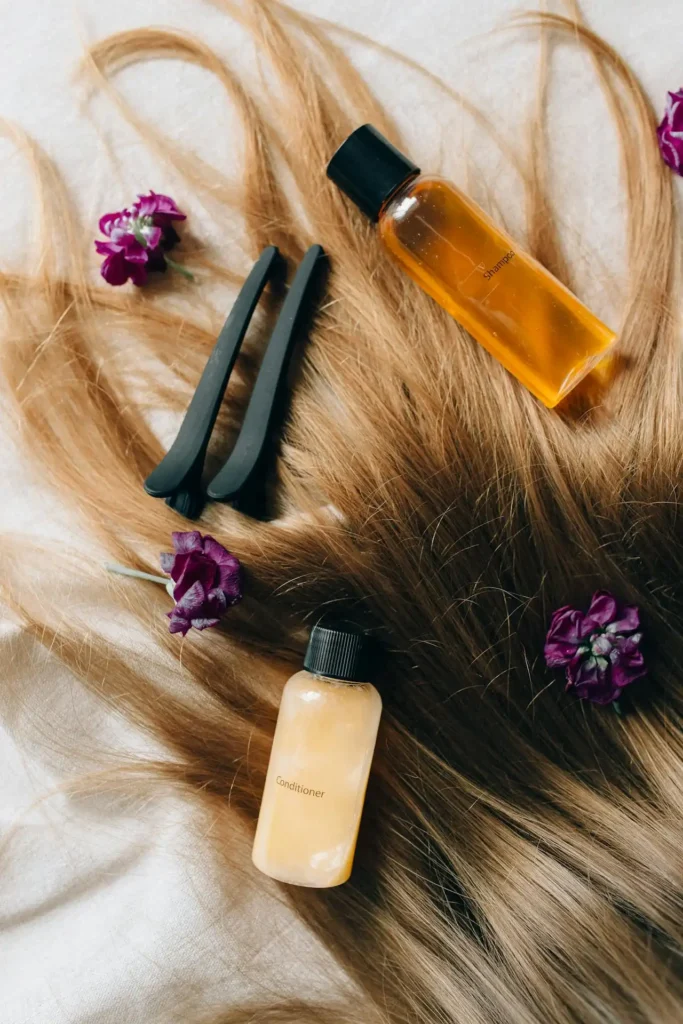5 Common Hair Mistakes You Should Stop Making Today
You’ve probably spent countless hours trying different hair products, watching tutorials, and experimenting with new styles.
Yet somehow, your hair still doesn’t look the way you want it to. The problem might not be what you’re doing—it could be what you’re doing wrong.
Mistake #1: Over-Washing Your Hair

You wake up, hop in the shower, and automatically reach for the shampoo. Every single day. Sound familiar?
This daily ritual might feel refreshing, but you’re actually stripping your hair of its natural oils.
Your scalp produces sebum, a natural oil that keeps your hair healthy and moisturized.
When you wash your hair daily, you remove this protective barrier faster than your scalp can replace it. This leaves your hair dry, brittle, and ironically, even greasier over time.
Your scalp responds to over-washing by producing more oil to compensate for what you’ve stripped away.
This creates a vicious cycle where you feel like you need to wash even more frequently. Instead of helping your hair, you’re training it to become dependent on daily washing.
Most hair types thrive when washed every two to three days. If you have oily hair, you might need to wash every other day.
Dry or curly hair can often go three to four days between washes. Pay attention to how your hair feels and looks rather than following a strict schedule.
When you do wash, focus the shampoo on your scalp and roots where oil accumulates.
Let the suds rinse through the lengths of your hair rather than scrubbing the entire strand. This gentle approach cleanses effectively without over-drying.
Mistake #2: Brushing Wet Hair the Wrong Way
You step out of the shower and immediately grab your brush to detangle those wet knots.
Stop right there! Wet hair stretches up to 30% more than dry hair, making it incredibly vulnerable to breakage.
When your hair is soaking wet, the water swells the hair shaft and weakens the protein bonds that give your hair its strength.
Running a regular brush through wet hair can snap these weakened strands like rubber bands stretched too far.
The key lies in your technique and tool choice. Start by gently squeezing excess water from your hair with a microfiber towel or cotton t-shirt.
These materials create less friction than traditional terry cloth towels, which can rough up your hair cuticles.
Next, apply a leave-in conditioner or detangling spray to provide slip and protection. Use a wide-tooth comb or a brush specifically designed for wet hair.
These tools have wider spaces between bristles, reducing the pulling force on individual strands.
Begin detangling at the ends and work your way up to the roots. This approach prevents you from dragging knots down the entire length of your hair.
Take your time and be patient—rushing this process guarantees more breakage.
If you encounter a stubborn knot, don’t force it. Hold the section above the knot to reduce tension on your scalp, then gently work through the tangle with short, careful strokes.
Mistake #3: Heat Styling Without Protection

Your straightener reaches 400 degrees, but you skip the heat protectant because you’re running late. This single decision can cause more damage than you realize.
High temperatures literally cook the protein in your hair, leading to permanent structural changes.
Heat styling tools work by temporarily breaking and reforming the hydrogen bonds in your hair.
Without protection, this process becomes destructive rather than transformative. You’ll notice the effects immediately: dull, frizzy hair that feels rough to the touch.
Heat protectants create a barrier between your hair and the styling tool. Think of it as sunscreen for your hair.
They contain silicones and polymers that coat the hair shaft, distributing heat more evenly and preventing hot spots that cause severe damage.
Apply heat protectant to damp hair before blow-drying, and again to dry hair before using flat irons or curling tools.
Don’t assume one application covers all your styling steps. Each time you apply heat, you need fresh protection.
Lower your tool temperatures whenever possible. Fine or damaged hair should never exceed 300 degrees, while thick or coarse hair can handle slightly higher temperatures.
Modern styling tools work effectively at lower settings when you use proper technique.
Consider alternating between air-drying and heat styling to give your hair recovery time. Your hair will thank you for the break, and you’ll notice improved texture and shine over time.
Mistake #4: Skipping Regular Trims
You’re growing your hair out, so cutting it seems counterproductive. This logic makes sense until you understand how split ends work.
Those tiny splits at the ends of your hair strands don’t just stay put—they travel upward, requiring you to cut off even more length later.
Split ends occur when the protective cuticle layer of your hair wears away, exposing the inner cortex.
Once this happens, the damage continues spreading up the hair shaft like a run in pantyhose. No amount of conditioning or treatments can permanently repair split ends.
Regular trims remove damaged ends before they can cause bigger problems. This small sacrifice actually helps you retain more length in the long run.
You don’t need to cut off inches every visit—even a quarter-inch trim every six to eight weeks makes a significant difference.
Professional stylists can spot damage that you might miss. They know how to cut your hair to maintain its shape while removing the minimum amount necessary.
Attempting to trim your own split ends often results in uneven cuts that require professional correction.
Between trims, protect your ends with nourishing oils or leave-in treatments. These small changes extend the time between necessary trims.
Sleep on silk or satin pillowcases to reduce friction, and avoid elastic hair ties that can snag and break your hair.
Mistake #5: Using Too Many Products at Once

Your bathroom counter looks like a beauty supply store exploded.
You layer on leave-in conditioner, heat protectant, volumizing mousse, smoothing serum, and finishing spray. Surely more products mean better results, right? Wrong.
Product overload weighs down your hair and creates buildup that blocks moisture and nutrients from penetrating the hair shaft.
Your hair becomes limp, greasy, and difficult to style despite all your efforts. Sometimes less really is more.
Each product serves a specific purpose, but using them all simultaneously often cancels out their individual benefits.
Proteins and moisturizers can conflict with each other when applied in large quantities. Silicones can build up and repel other beneficial ingredients.
Start with a simple routine and add products one at a time. You might discover that three well-chosen products work better than ten random ones.
This approach helps you identify which products actually improve your hair’s appearance and which ones you can eliminate.
Read ingredient lists and understand what each product does for your hair. If you have fine hair, avoid heavy oils and creams that will weigh it down.
If your hair is thick and coarse, lightweight products might not provide enough moisture and control.
Pay attention to the order of application. Generally, you should apply products from thinnest to thickest consistency.
Water-based leave-ins go on first, followed by creams, oils, and finally styling products. This layering technique ensures each product can penetrate properly.
Most importantly, adjust your routine based on your hair’s current condition and the weather.
Your hair needs different care in winter versus summer, and what works during humid months might be too heavy during dry seasons.
Conclusion
Stop sabotaging your hair goals with these common mistakes, and you’ll see dramatic improvements in just a few weeks.






